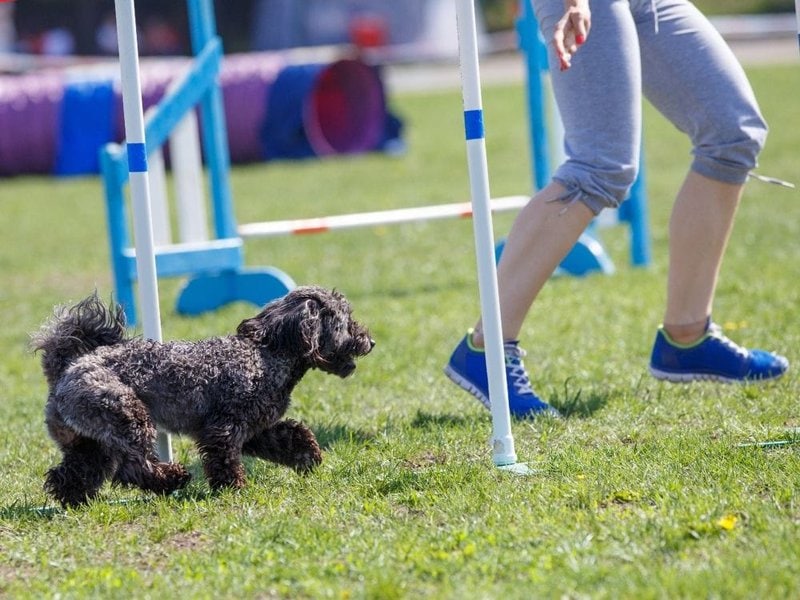We all want what’s best for our dogs, and that includes teaching them good manners. Sometimes, dog training can sometimes be a bit of a challenge.
One of the most important things to remember when training your dog is to be consistent. Every time you give a command, make sure everyone in the family implements it consistently. This way, your dog won’t get confused and will learn more quickly.
Here are 9 of the most popular dog training techniques, all of which are fast and easy to do. Let’s get started!
9. Dog Brain Training
Dog brain training is a great way to keep your dog’s mind active and engaged. There are a variety of different ways to train your dog’s brain, and you can find many resources online or at your local pet store.
One way to train your dog’s brain is through puzzle toys. Puzzle toys are designed to challenge your dog and make them think in order to figure out how to get the treat inside. This type of training is not only great for mental stimulation, but it can also be a lot of fun for your dog.
Another way to train your dog’s brain is through memory games. Memory games help to improve your dog’s memory and recall skills. You can find many different memory games online or at your local pet store.
Lastly, you can also use obedience training to help train your dog’s brain. Obedience training helps your dog to learn how to listen to and follow commands. This type of training is great for teaching your dog basic manners and obedience. It is also a great way to bond with your dog.
8. Positive Reinforcement Dog Training Technique
One of the most popular dog training techniques is positive reinforcement. This involves rewarding your dog for good behavior in order to encourage them to continue this behavior. Common rewards include treats, praise, and petting.
When using positive reinforcement, it is important to be consistent with your rewards. This means that if you always give your dog a treat when they sit on command, they will learn that sitting is a good thing and will be more likely to do it again in the future.
However, if you only sometimes give them a treat, they may become confused and less likely to obey your commands.
It is also important to deliver the reward immediately after the desired behavior is displayed. This will help your dog make the connection between their action and the reward. If you wait too long to give the reward, your dog may not understand why they are being rewarded and will be less likely to repeat the behavior in the future.
7. Relationship-Based Dog Training Technique
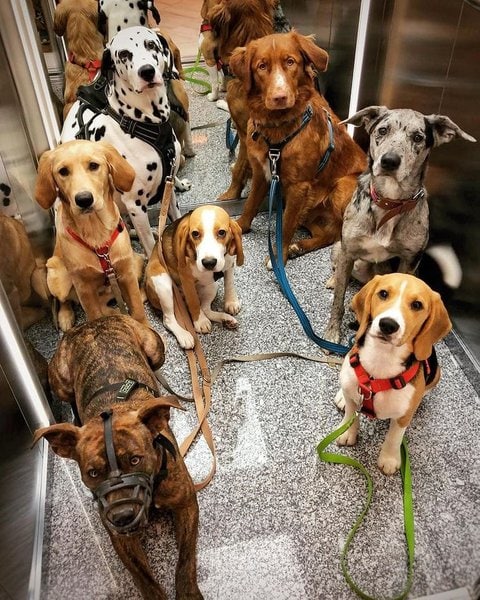
The bond between dogs and humans is truly impressive and endearing. Even the most aloof and reserved of dog breeds eventually let their walls down when they feel safe and loved. This is exactly what the relationship-based dog training model relies on.
This technique is best executed by the dog’s owner as it takes advantage of the existing bond of trust between the pooch and their favorite human.
However, it can also be done by unfamiliar professional trainers. In these cases, the first few sessions are geared towards forming some sort of a bond.
Another hallmark of the relationship-based strategy is that it needs to be the perfect balance of fun and actual learning. It seeks to change very little, if anything at all, about the relationship dynamics between the trainer and the dog.
Therefore, if you are always sweet when you talk to your dog, this is not the time to suddenly turn into a drill sergeant. If you do it right, it should end up feeling more like playtime with new skills than an actual training session.
Despite all this awesomeness to look forward to, the dog’s personality is definitely worth considering for this one. This is because it only works if the dog’s temperament traits include an eagerness to please and high levels of responsiveness. For some dogs, it will take more than just a buddy-buddy relationship with you to get them to tow the line.
6. Dominance-Based Training Technique
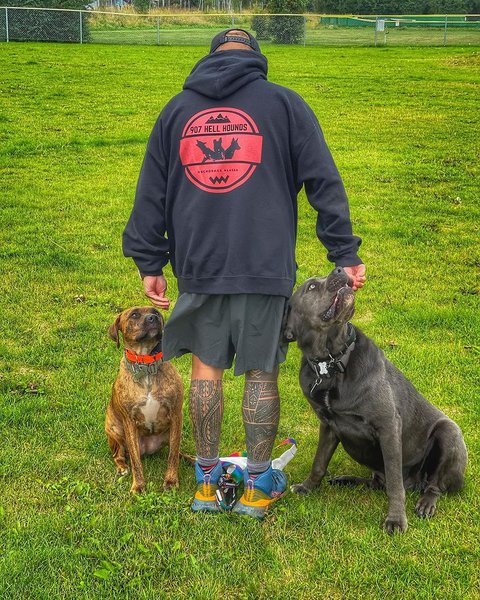
Training is not always fun and games and there are times you will have to set your foot down and be firm with your dog. This is especially important with bold dog breeds with an inclination to dominant and aggressive behavior. That is exactly what the dominance-based dog training technique exists to achieve.
Most dog breeds have a strong pack mentality and tend to gravitate towards submission to the most dominant in the group. It could be the largest, strongest, or simply the most confident of the dogs.
When using this technique, it is important to appreciate that you are now your dog’s pack and there can only be one alpha. And unless you want issues, especially with aggressive dogs, you have to step up to the plate.
Training, in this case, involves using more of a firm and confident tone. However, you have to be careful not to take this too far so you do not trigger your dog’s defensive responses.
Dominance based dog training also does not dwell too long on positive reinforcement.
Just appreciate the successful execution, give them a quick rub or praise and move on to the next step of the training.
5. Model-Rival Training Techniques
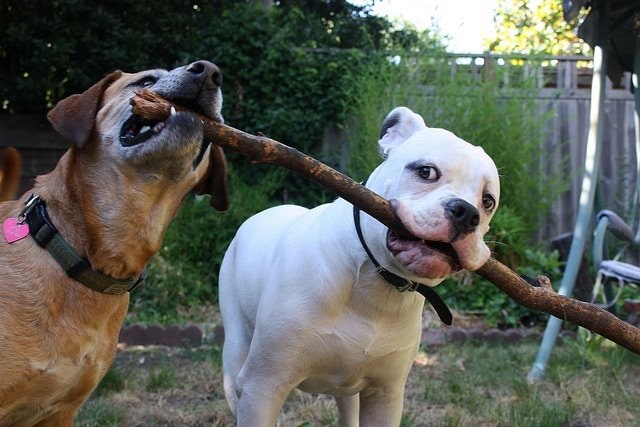
A little competition when it comes to training your dog may go a long way. This is awesome if you have two dogs you want to train at the same time. The rivalry motivates them to be responsive especially if your approval is on the line.
In this case, training is often done simultaneously. Make sure to reward the dog that does it fastest first. This creates the desire in the second pooch to impress you and get the same kind of attention and affection.
However, there is a slippery slope between encouraging competition and completely deflating the slower dog’s spirits. You therefore also have to appreciate the second dog’s efforts albeit not as enthusiastically. The small reinforcement will make the world of a difference.
It also works well with dogs that have already been trained in which case you also get demonstrations for easier execution of commands by the rookie pooch. The competitive aspect of the approach also works with this dynamic.
Whether you choose to pair two amateur doggies together or you get a trained one for demonstration, it is crucial to only choose dogs with good chemistry. If you pit two dogs that are already at odds, you risk making things worse with chances of escalation.
4. Motivational Training Technique
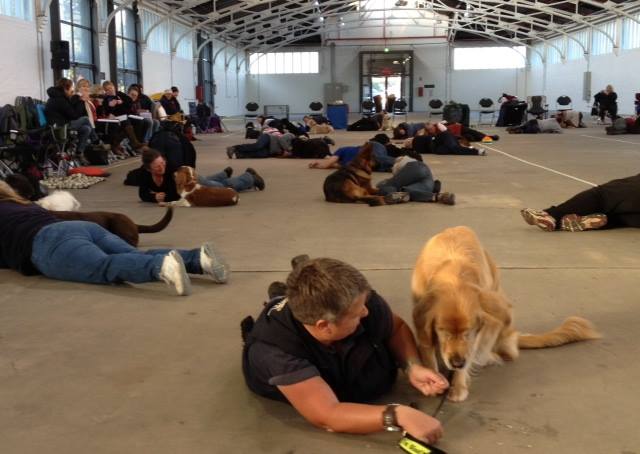
Motivational training is very similar to the positive reinforcement technique as you will see shortly. However, there are a few subtle but very important differences that give each option its perks.
For the most part, both the motivational training technique and the positive reinforcement seek to encourage desired behavior by evoking positive emotions in the dog.
With the motivational approach, this is usually done verbally. It could be a “good boy” here or “you can do it” there that lets the dog know that someone is rooting for them.
Obviously, your dog doesn’t understand actual language and may not know what exactly it is you are saying. That is why the tone is so important. Use a gentle and enthusiastic tone which your pooch should recognize as positive especially if you use it elsewhere during your bonding sessions.
The key feature of the motivational dog training technique is the timing of the motivation.
Ideally, this should be done both during and after the execution of the desired command. However, you do not want to be too enthusiastic as you may distract them. Instead, start small with gentle praises and build up in intensity as the dog gets further and further into the activity.
3. Dog Clicker Training
One of the great things about clicker training is that it can be used to teach your dog a wide variety of tricks and behaviors. Whether you want to teach your dog to sit, stay, come when called, or anything else, clicker training can help you accomplish your goals.
If you’re interested in trying out clicker training with your dog, there are a few things you’ll need to get started. First, you’ll need to purchase a clicker. You can find these at most pet stores or online. Secondly, you’ll need some tasty treats that your dog loves. These will be used to reward your dog for desired behaviors.
Once you have all of the necessary supplies, you’re ready to start training! The first step is to get your dog’s attention. To do this, simply hold the treat in front of his nose and wait for him to look at you. Once he makes eye contact, immediately click the clicker and give him the treat.
Next, it’s time to start teaching your dog the behavior you want him to learn. For example, if you want him to sit, place the treat on his nose and then move it up and back so that it’s above his head. As he follows the treat with his eyes, he should naturally start to sit down. As soon as his bottom hits the floor, click the clicker and give him the treat!
If you are interested in giving this a try, check out PetSafe Clik-R Dog Training Clicker. With its high-quality construction and ergonomic design, it is a tool you will definitely enjoy using.
2. Science-Based Dog Training
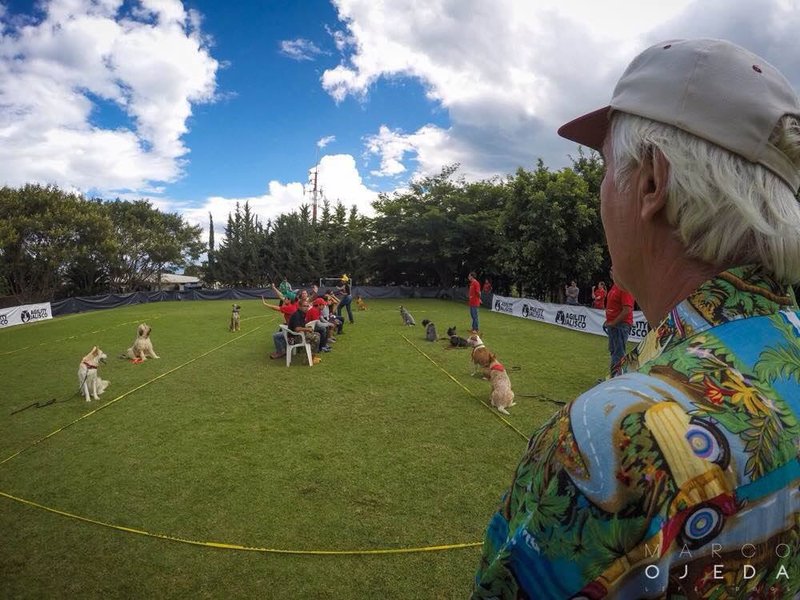
Most dog training strategies are very specific involving the desired behavior, methods to encourage it, and the outcome.
However, this pooch-training approach is not as straightforward as one would deem it to be. The science-based dog training hack is more of a general concept than an actual set of steps and rules. It is one of the newer strategies and is already quite promising.
The basic premise of science-based dog training is that every pooch is different even within the same dog breed. Understanding the dog’s behavioral patterns makes it easier to push their buttons right for the desired behavior. You also have to understand your dog’s learning abilities. That way, it is possible to curate more individualized training plans.
When employing this strategy, it is also important to understand the behavioral norms of the dog breed you are dealing with in general. Maybe the breed is known for being very obedient and responsive. Maybe they are notoriously stubborn and aloof.
When it comes to the actual execution based on what you understand about your dog, there is no fixed path to take. More often than not, dog owners and professional dog trainers combine several strategies or even make up new ones of their own with their understanding of what may work best.
1. Electronic Dog Collar Training
Electronic dog collar training is easily the most controversial training method on our list. This is because it is one of the few approaches out there that uses negative reinforcement to discourage unwanted behavior.
What many people do not realize is the fact that most tools used in this method are specially designed to offer humane and dog-friendly correction. You, therefore, do not have to worry about hurting or traumatizing your furry best friend.
The technique utilizes dog collars fitted with systems that give an irritating but otherwise safe static shock to dissuade the dog from unwanted behavior. It is often used in bark control training, especially if the dog owner is away or asleep and not able to immediately reprimand the noisy pooch.
We recommend the PATPET Dog Training Collar which allows you to choose between static shock, vibrations, and beeping for dog-friendly reinforcement.
Related Questions
How Do Professional Dog Trainers Train Dogs?
Most, if not all, professional dog trainers use positive reinforcement as the main dog training technique. However, with many good-quality dog training facilities and experts, the sessions are customized based on the dog’s personality and intelligence level. In such cases, a combination of techniques may be used for effective training.
What Is The First Thing You Should Train Your Puppy?
The first thing you should train your dog on is how to focus. This is easily achieved using the positive reinforcement technique and basic commands like “sit” or “come”. This approach allows the dog to get familiar with your authoritative tone. It also allows them to form basic connections between behavior and reinforcement which makes subsequent training easier.
Is It Better To Train Your Dog Yourself?
If you have the tools and the strategies, it is best to train your dog yourself. This is because you are ultimately the one who will be reinforcing the behavior and utilizing the skills the dog has learned in the long run. It also makes it easier for the dog to remain responsive as they associate you with authority from the very start.

